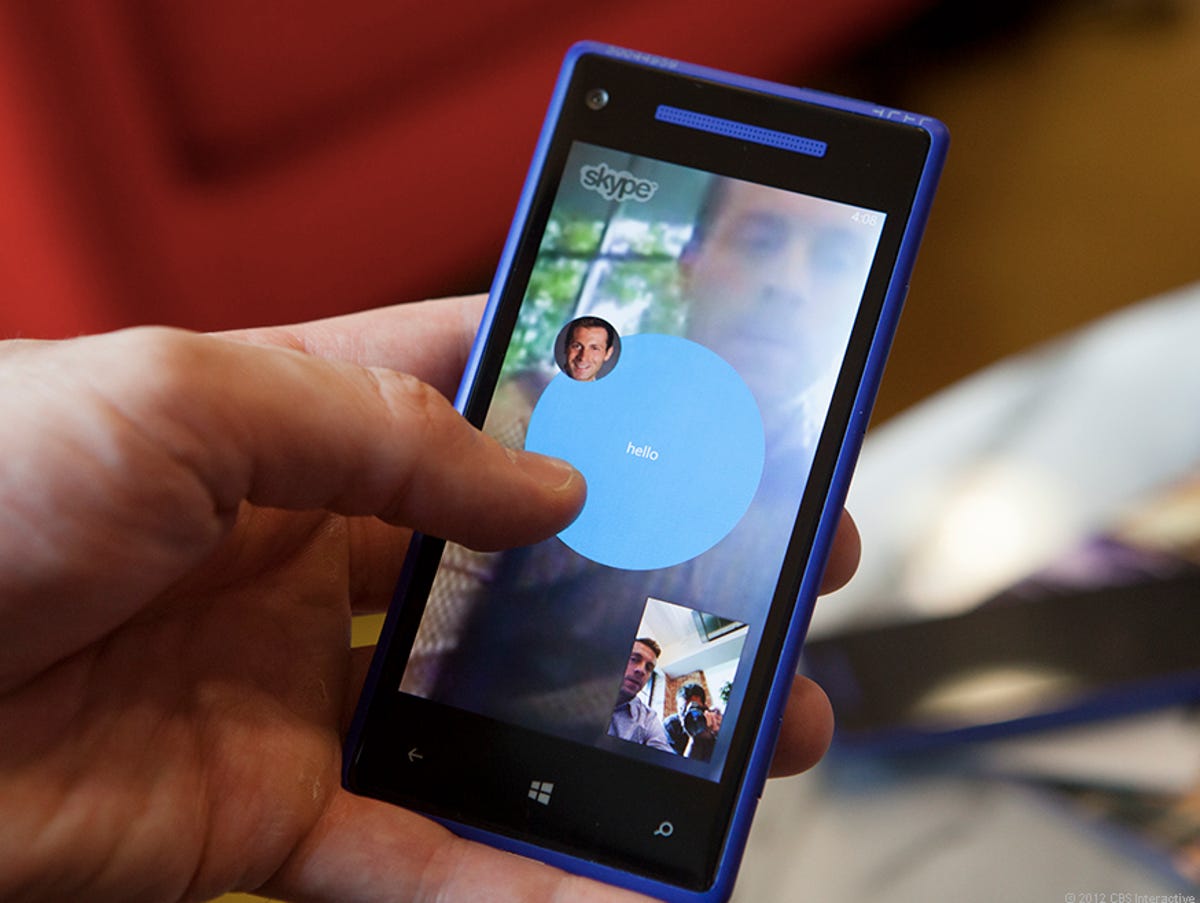Skype’s VoIP app is “coming soon” for Windows Phone 8, but when it arrives, it’ll be outfitted with more options than its Skype sibling for Windows Phone 7.5.
Written in native code, the app integrates into your address book and partially into the dialer, so you can receive incoming Skype calls the same way you would receive a cellular call. You’ll be able to answer with a video chat in addition to voice. Skype contacts also integrate into your address book, so you can find your buddies from your contacts screen, not solely from the app.
To field your calls, Skype is always receptive, through a backend notification system that is designed not to drain battery.
There are some new features as well as old favorites. Like the version for Windows 8, Skype for WP8 adds a new screen for favorite contacts. Group chat also makes its debut. Skype emoticons are all there as well, and support for Skype Credit means you’ll be able to call friends from overseas. If someone IMs you during a video call, you’ll be able to respond, or move the bubble aside, without crashing your call.


James Martin/CNET
If you pin Skype to the Start screen and blow it up to its largest possible size, you’ll be able to read your latest instant message.
There are two ways to get into the Skype app, from the live tile/app list or by selecting a contact’s name from the address book. Entering the former way brings you to the Recents screen. The latter, however, doesn’t launch any outgoing call, it lands you on the chat screen. From there, you can reach out via chat or just place the call.
I find this buddy-list-to-chat behavior unnecessarily circuitous, and it seems to serve Skype’s agenda to forward its chat service more than it does people who just want to make a call.
How does the app itself look? Some screens look terrific: clearly tied into the Skype aesthetic, but simple and streamlined. Others strike me as overly sparse, unfinished, and very Web 1.0.
My assessment on how well Skype works on Windows Phone 8 will have to wait for the full version to land, but I will say that the demo calls went through without dropping, and while video was a little dicey over CNET’s free public Wi-Fi network, it held on through the duration of a short demo call without skipping or freezing.



